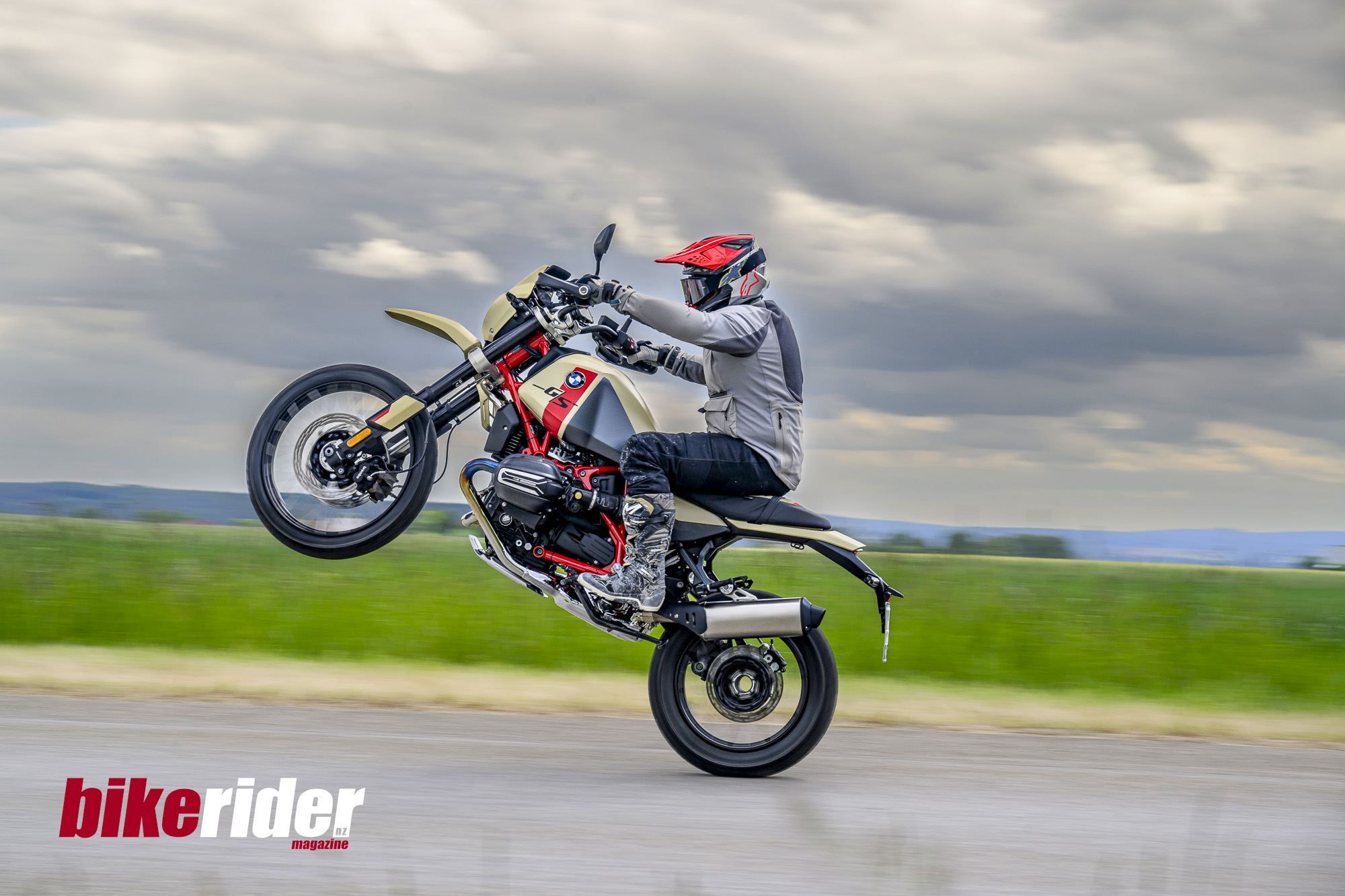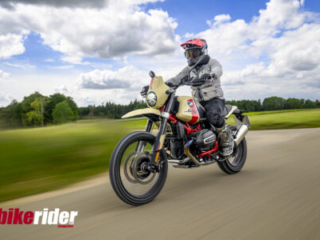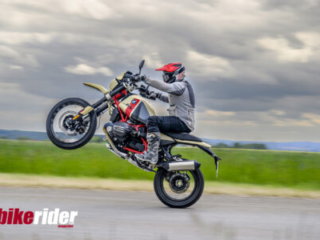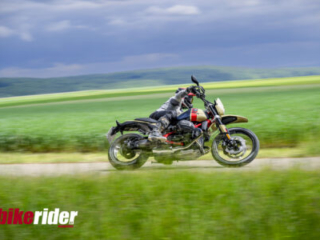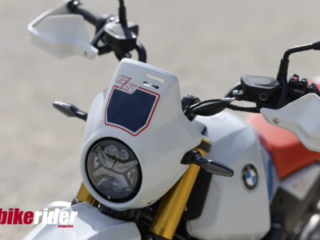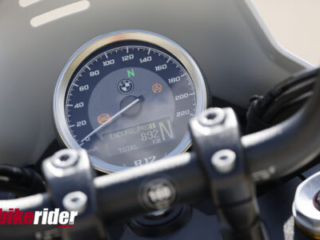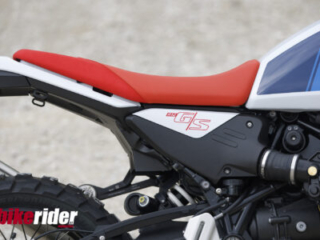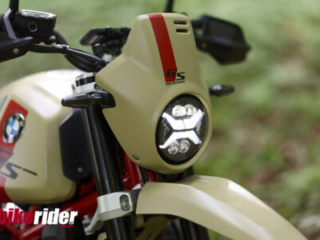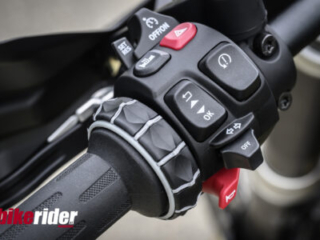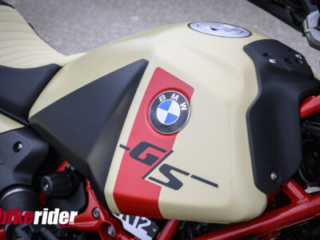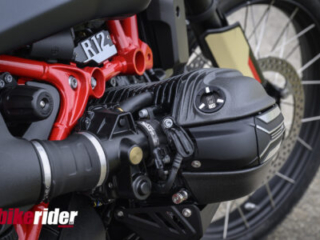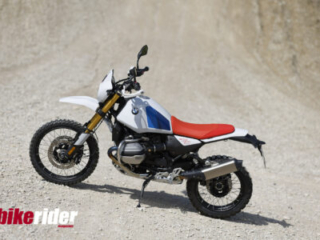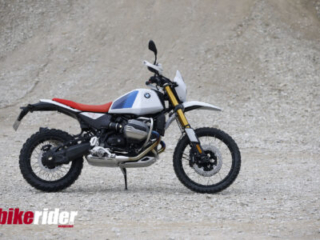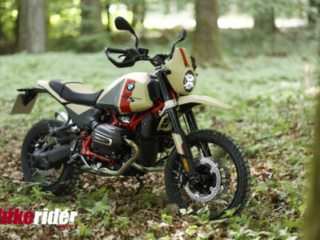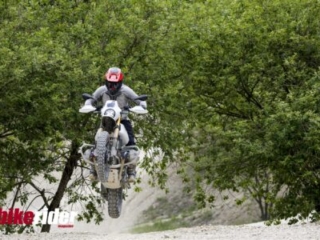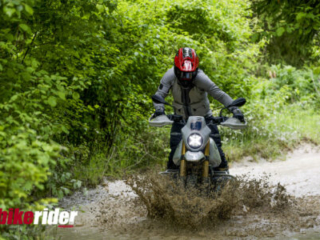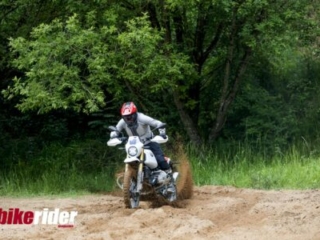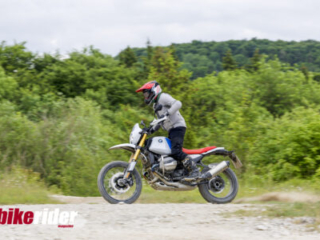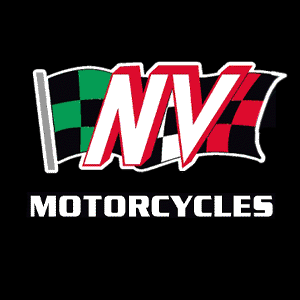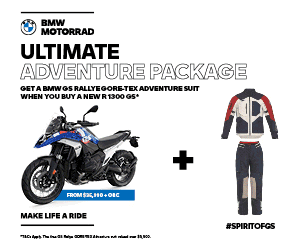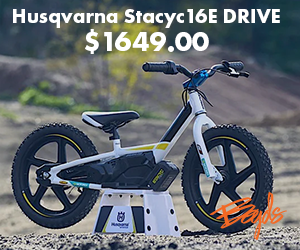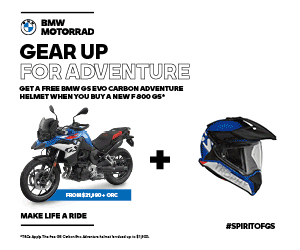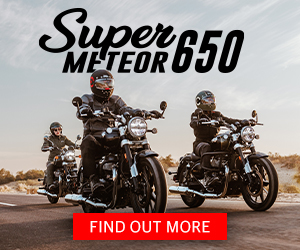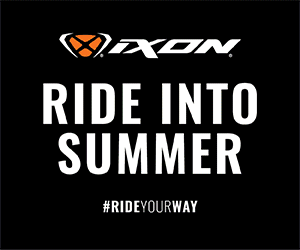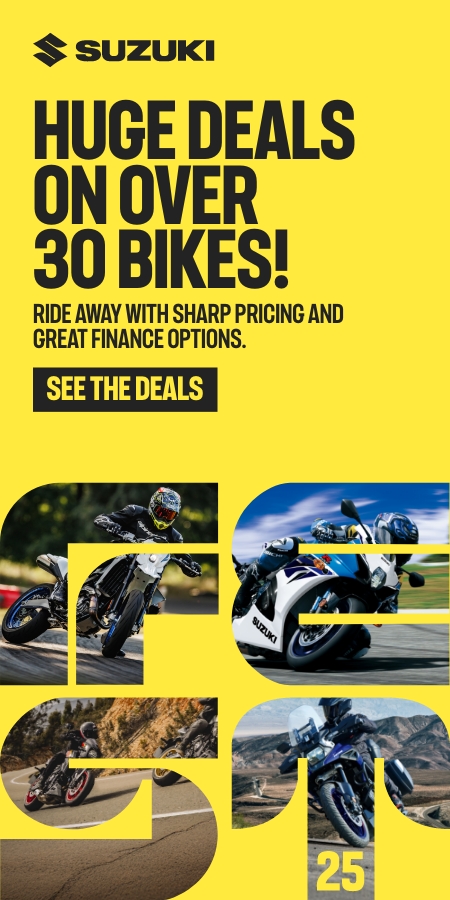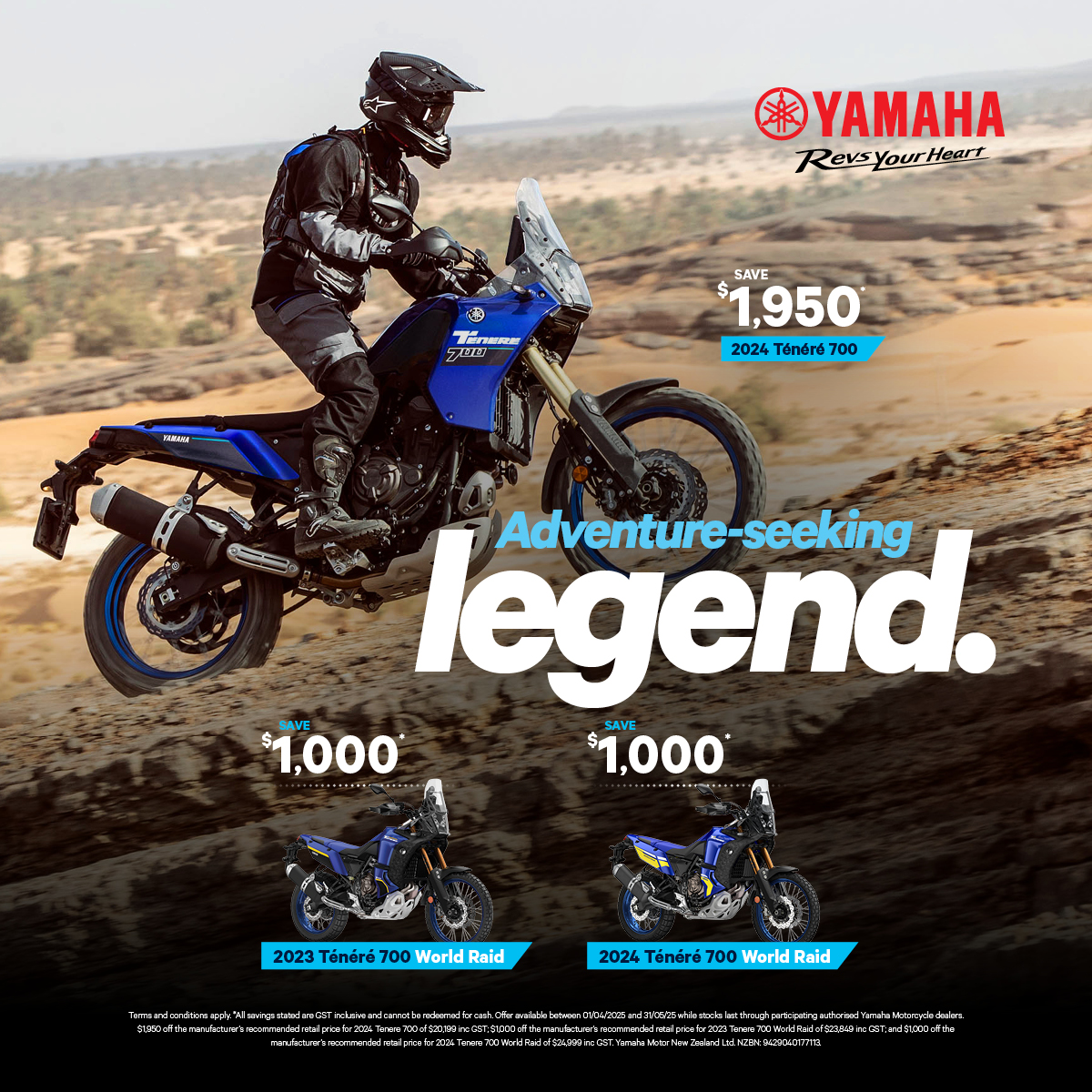- Inspired by the 1980 R 80 G/S with classic boxer styling and heritage design cues
- Powered by BMW’s 1200cc air-cooled boxer engine with modern rider aids and electronics
- Built for adventure with 240mm clearance, adjustable enduro suspension, and optional Enduro Package
With the massive popularity of BMW’s GS range in recent years, it’s hard to believe that the iconic flat-twin adventure machine wasn’t that popular when it was first launched. Chad headed to Germany to ride a machine whose styling harks back to the early days of the GS, but with the modern tech that we’ve become accustomed to on the flagship machines.
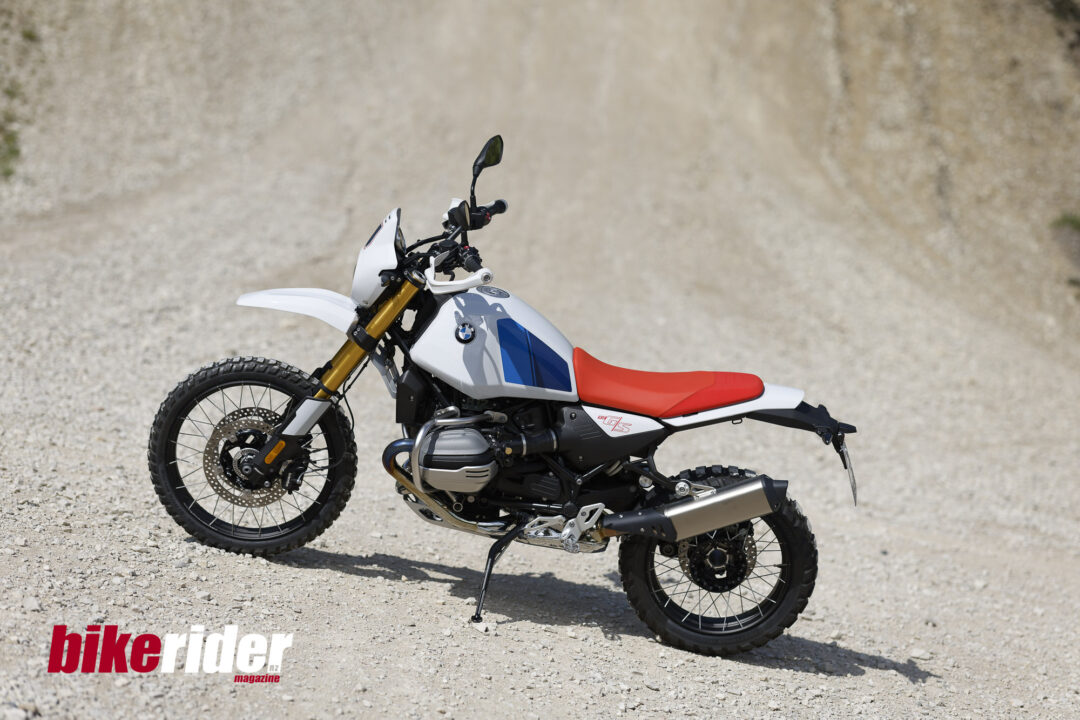
The story begins in 1980, when the first production GS – the R 80 G/S – rolled off the Berlin line. It wasn’t a showroom sensation, but it achieved something far more valuable: four Dakar Rally wins in 1981, 1983, 1984 and 1985. Those victories came on a heavily reworked version of the G/S, a far more aggressive machine than the road bike it was based on.
Even with its racing pedigree, the GS took years to truly catch fire commercially. The breakthrough came with the R 1100 GS in 1994, followed by the real explosion in popularity a decade later when the R 1200 GSA landed in 2004/2005.
What many don’t realise is that it all began with a prototype back in 1978. The concept was simple but audacious: drop BMW’s boxer motor into an off-road frame and see what happens. No focus groups, no global marketing plan — just a bold experiment that grew into the world’s most successful adventure bike.
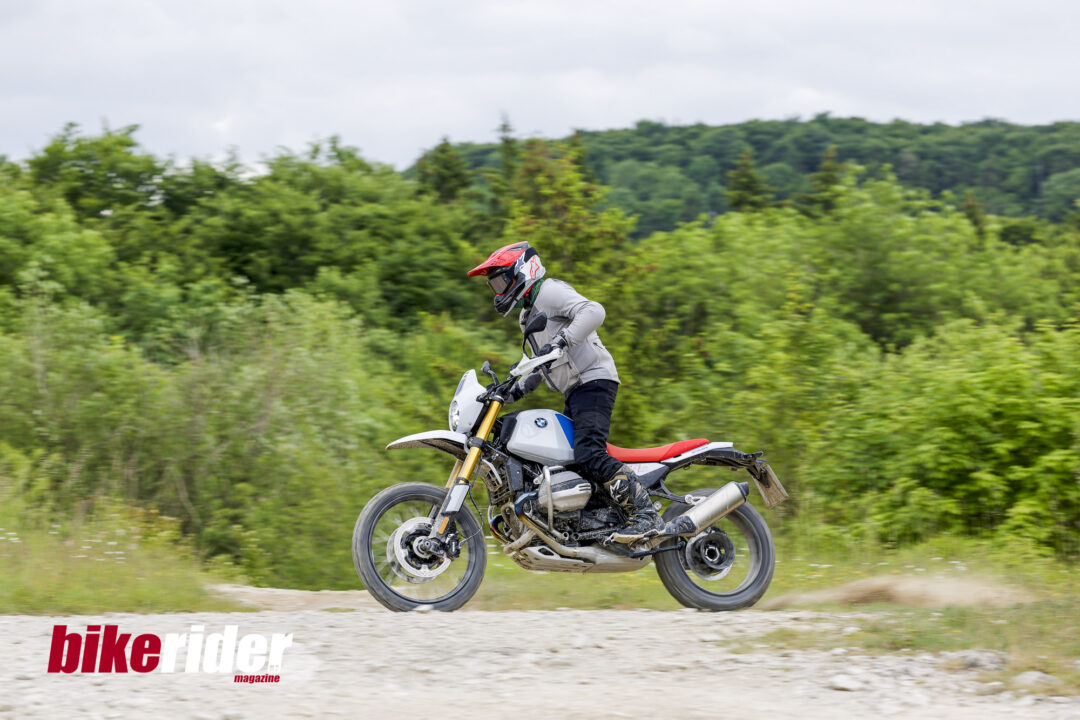
Jump to the present and BMW has revealed the new R 12 G/S — a model designed as a tribute to those early R 80 machines. It runs BMW’s air-cooled 1200cc boxer, shared with the R 12 and R 12 NineT, keeping the heritage vibe alive. In terms of looks, it channels the original G/S perfectly, blending nostalgia with modern detailing.
But the retro styling hides plenty of modern engineering. Expect multiple riding modes, electronic rider assists, BMW’s Shift Assist, heated grips, cruise control, and hill start control. For the dirt, it packs 240mm of ground clearance, fully adjustable enduro suspension, and an optional Enduro Package with an 18-inch rear wheel and extra clearance.
We flew to Germany to find out whether the R 12 G/S really carries the torch for the legend, both on the highway and in the rough stuff.
Before we start geeking out over power figures, torque curves, electronics, and suspension trickery, just stop and look at it. Because in the flesh, BMW’s new R 12 G/S really does pull you in. Credit where it’s due—the design team nailed the proportions. Maybe I’m biased. I’ve always had a soft spot for BMW’s retro-inspired boxers, and I ran an R 12 R nineT on long-term test last year. But even if you’ve never stuck a Paris-Dakar sticker on your toolbox, this thing has presence. Especially in the red, white, and blue paint—sorry, “Light White” in BMW-speak.
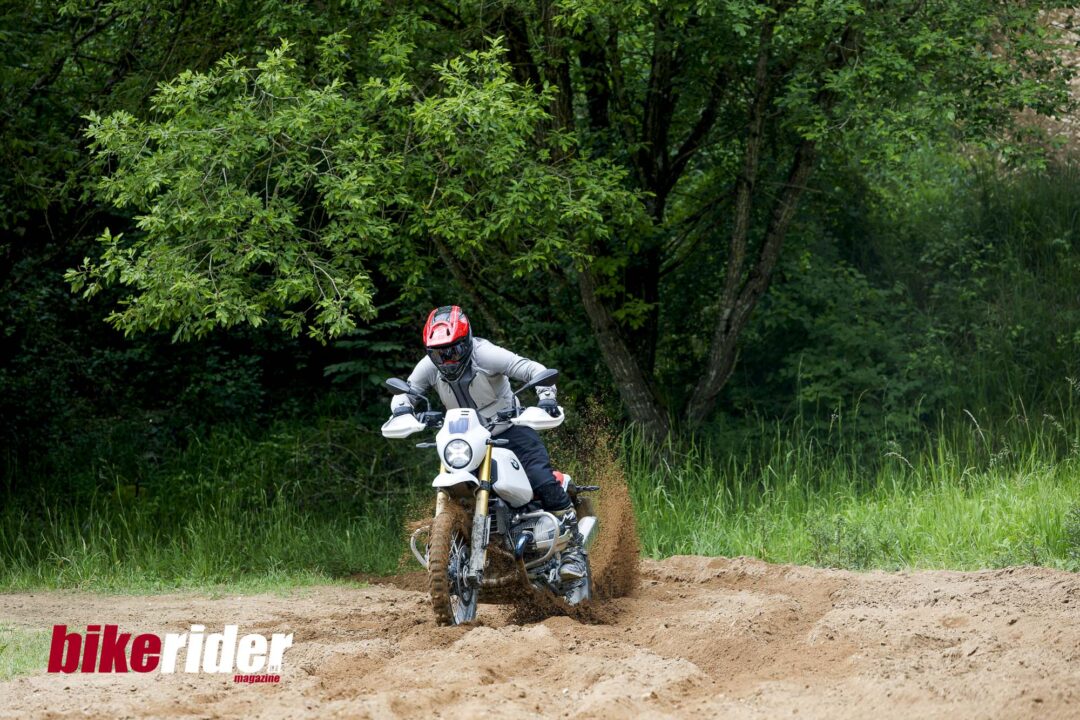
Now, whether you’ll actually like the look probably depends on your riding history. Old-schoolers will see the ’80s throwback instantly. Younger riders might just think it’s cool in a “hipster café-bar with tin mugs” sort of way. But you don’t need a waxed moustache to get it. You just need to be human enough to appreciate the charisma of that big, air-cooled boxer hanging out in plain sight.
That 1,170cc flat twin is the same as in the R 12 and R nineT: 109 horses at 7,000rpm, 115Nm at 6,500. The numbers won’t break the internet, but they tell only half the story. It’s the way the boxer delivers its shove—thick with torque from idle, mechanical, a bit rough around the edges. Flick the starter and the whole bike shuffles side to side like it’s had an espresso. It’s got character in spades, and in an age of ever-smoother parallel twins, that’s worth something.

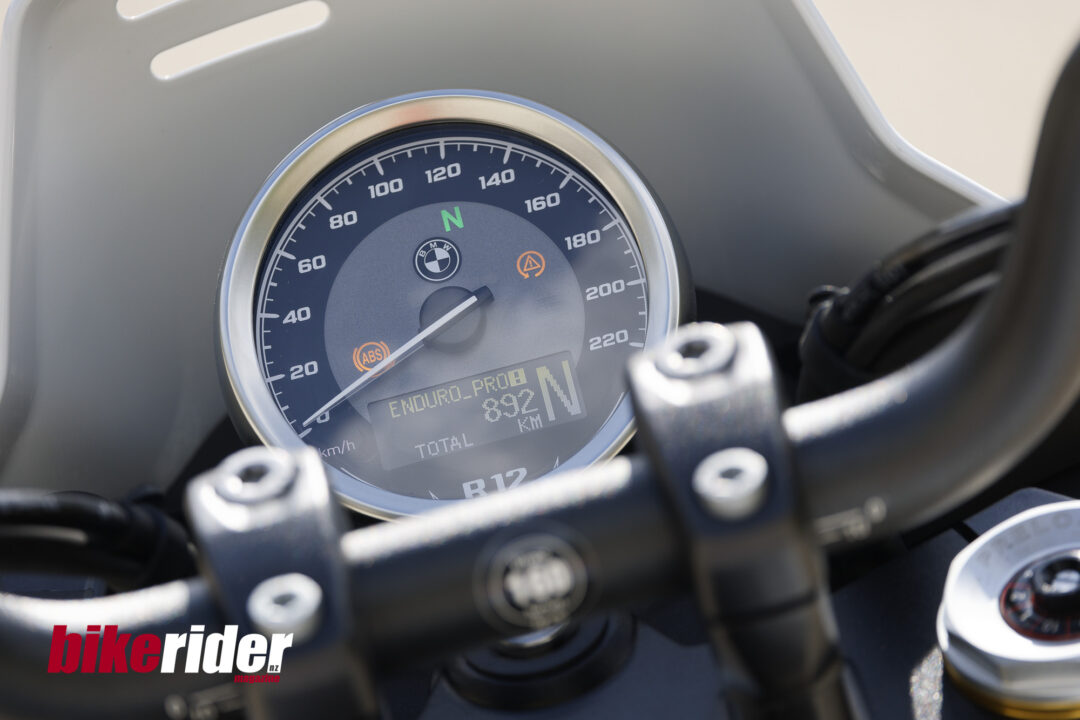
Electronics are generous: three modes as standard (Rain, Road, Enduro), with an optional Enduro Pro package if you want to get muddy. Add to that lean-sensitive ABS Pro, traction control, and engine drag torque control—all stuff that, back in the Baywatch era, was still science fiction.
Chassis-wise it’s the usual tubular steel with a bolt-on subframe, fully adjustable suspenders, and BMW’s Paralever rear end. The front runs a 21-inch wheel, and depending on spec, the rear can be a 17 or 18. The latter bumps up clearance and seat height for proper dirt duty.
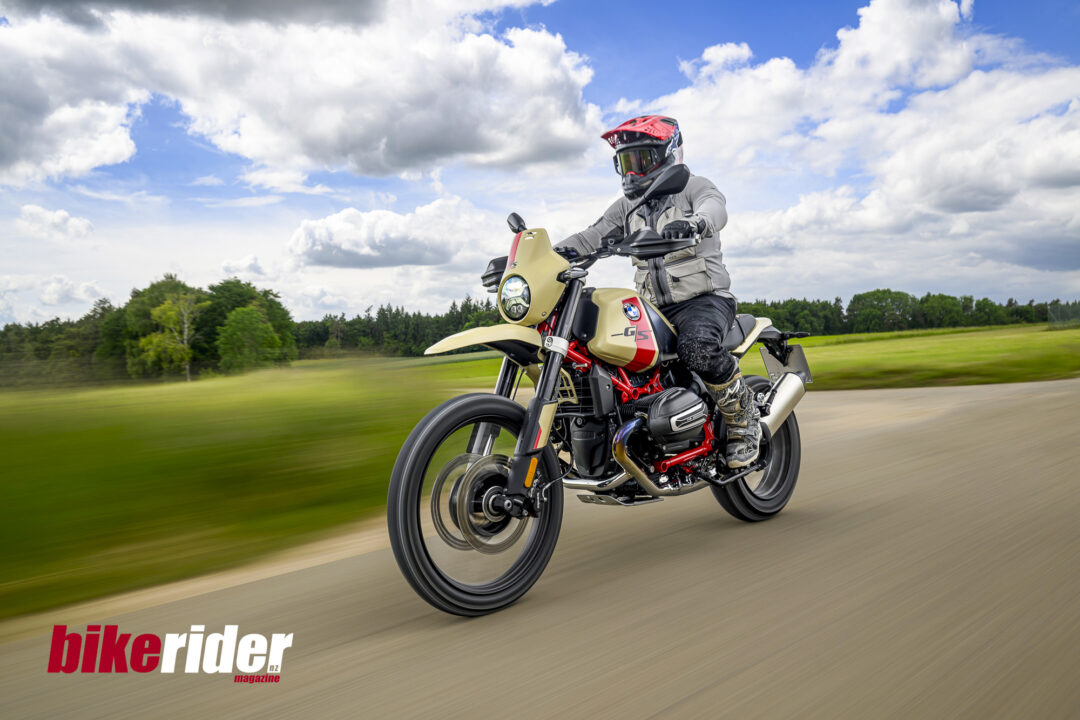
And here’s the kicker: despite a full-tank weight of 229kg, it never feels like it. Low-slung cylinders mean the mass is down where you want it, and the bike carries itself with balance. I’m 5’7″ and expected to wrestle the tall-seat Pro version, but the narrow tank and slim perch make it surprisingly manageable.
On tarmac, it flows. The 21-inch front isn’t razor-sharp, but it rolls into corners smoothly, predictably, and rewards a relaxed style. The torque-rich motor and that clunky-but-endearing BMW gearbox (with quickshifter if you tick the box) mean you’re always in the thick of it without wringing its neck. Swap the Karoo 4s for road rubber and you’ll unleash even more.
Off-road, though, is where BMW wants you to take it. We rode the thing through water, sand, trails, even jumps at their Nuremberg playground in Germany. In Enduro mode, the bike keeps you safe with softened throttle and maximum aids. In Enduro Pro, it cuts the electronics right back: no wheelie nanny, minimal TC, rear ABS off. Perfect for playing hero. Even beginners will find confidence in its low-speed balance, while more experienced riders will happily get it sideways.
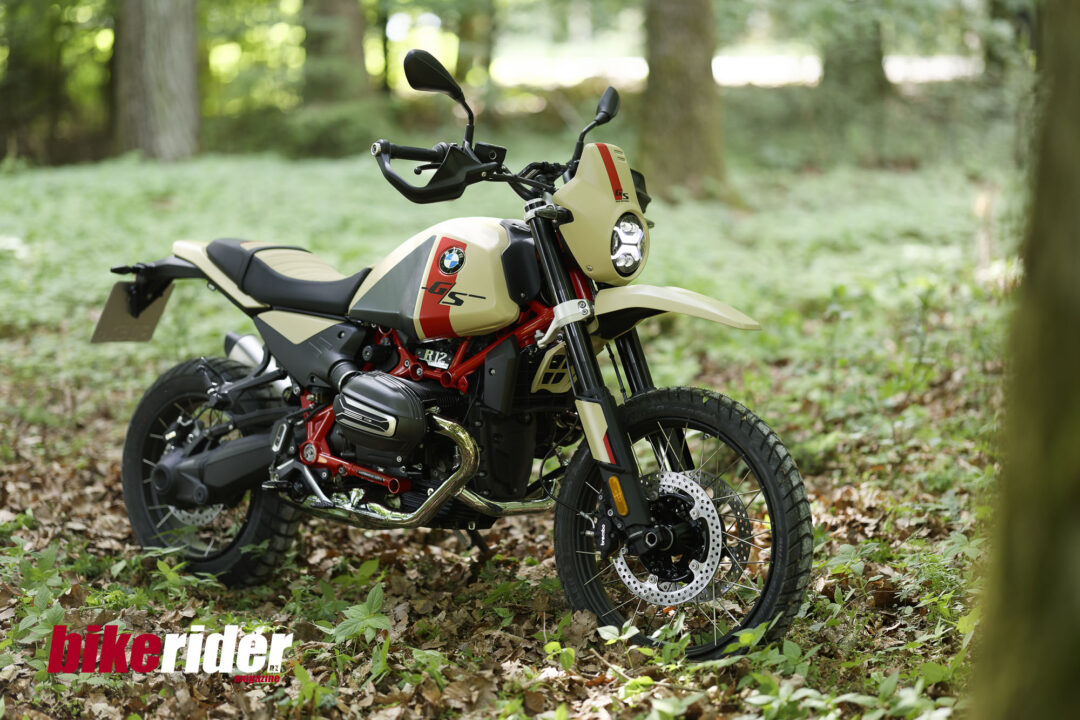
Spec sheets will have you choosing between seat heights, dash options (retro single dial or stripped-back digital), heated grips, cruise, crash bars, and so on. Our test bike, loaded with Enduro Pro and a few tasty extras, will likely take it a decent chunk over the $30,390 standard list price—steep, but not unexpected in today’s market.
Downsides? The seat isn’t exactly an armchair, there’s little wind protection, and the TFT still doesn’t give you a proper fuel gauge. But those feel more like quirks than flaws.
The truth is, the R 12 G/S has soul. It’s not chasing lap times, nor is it a hardcore rally weapon. It’s a bike you want to ride just for the sake of riding—whether that’s threading city traffic, blasting back roads, or getting muddy in the woods. And in an age of increasingly sterile adventure bikes, that’s a rare and beautiful thing.

VERDICT
It’s hard not to fall for the R 12 G/S. The look is spot on—retro without being pastiche, distinctive but unmistakably BMW. But this isn’t just a case of style over substance. That air-cooled boxer has the sort of torque and charm you only get from something a bit old-school, and combined with the bike’s natural balance it makes life easy, whether you’re threading city traffic or kicking up dust on a trail. There’s enough performance for the real world, and the rider aids work quietly in the background—effective, intuitive, and adjustable to whatever mood or terrain you find yourself in.
Spec it right and the G/S becomes whatever you want it to be: an off-road explorer that’ll happily get dirty, or a sharp, attitude-laden commuter that turns heads outside the coffee shop.
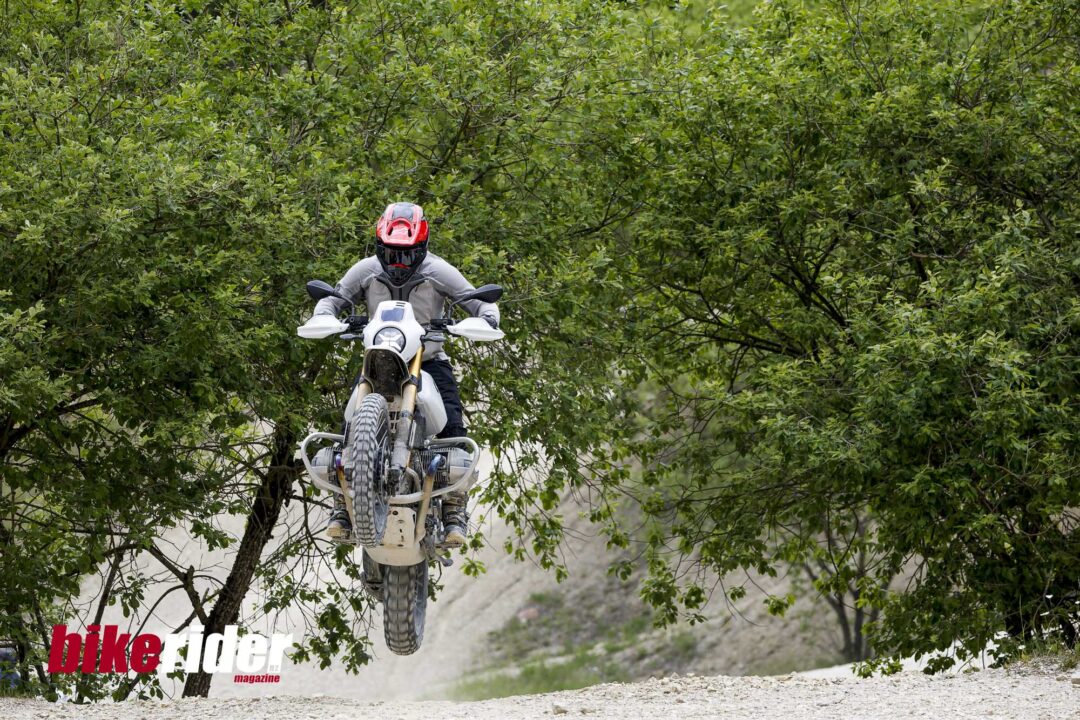
It’s not perfect. The missing fuel gauge on the TFT feels like a daft oversight, and you still need a key for the steering lock, which slightly defeats the point of keyless. And yes, just under 110bhp might look a bit limp on paper—especially when you’re staring down the barrel of a near $30+k build.
But that’s missing the point. The R 12 G/S isn’t about spec-sheet battles; it’s about how it makes you feel. And this one makes you grin—every time you blip the throttle, every time you catch your reflection in a shop window, every time you throw a leg over it. I didn’t want to hand it back. In fact, I’d love to see one sat in my garage, waiting to brighten up any ride, any day.
Words: Adam Child Pics: BMW
2025 BMW R 12 G/S Gallery
Specifications
2025 BMW R 12 G/S
Price: $30,390 + ORC
Engine: DOHC, Air-cooled, four-stroke Boxer
Displacement: 1170cc
Bore x stroke: 101 x 73mm
Compression ratio: 12.0:1
Max power: 109 hp at 7,000rpm
Max Torque: 115Nm at 6,500 rpm
Fuel system Electronic intake pipe injection / digital engine management system with throttle-by-wire
Exhaust: 2-1
Transmission: Six-speed shaft drive
Electronics: Rain, Road , Enduro
Chassis: Tubular space frame
Front suspension: 45mm Upside down fully adjustable 8.2 inch Travel
Rear suspension: BMW Motorrad EVO-Paralever, single spring fully adjustable 7.8 travel
Front brake: Dual 4-piston axial-mount calipers, 310mm discs w/ ABS
Rear brake: 1-piston caliper, 265mm disc w/ ABS
Front tyre: 90/90 – 21
Rear tyre: 150/70 – 17
Wheelbase: 1580mm
Seat height: 860mm
Fuel capacity: 15.5lWeight: 216kg (dry, claimed). 229kg (fully fuelled).
Contact: www.bmw-motorrad.co.nz

